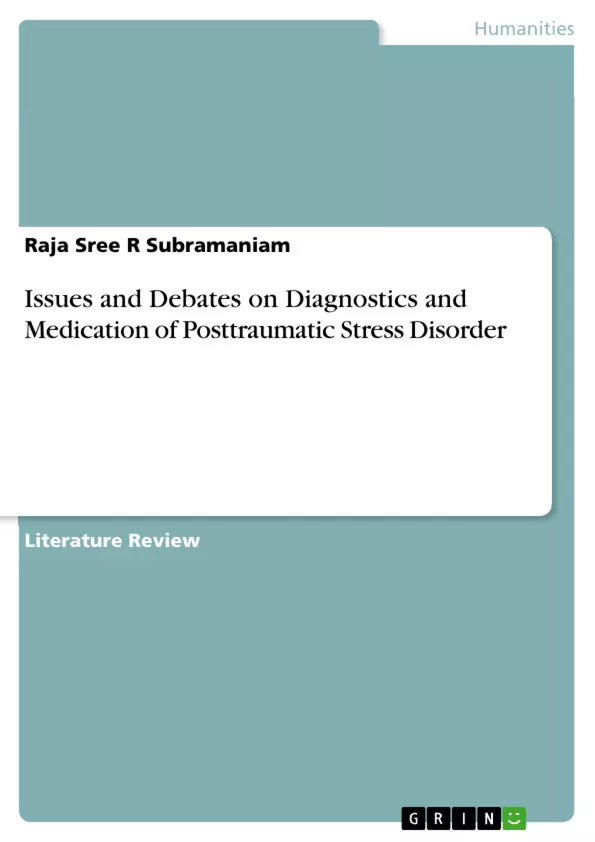Whether it is war-traumatized soldiers, refugees, victims of sexual assault or victims of catastrophic life events, the psychiatric consequence of the posttraumatic stress leading to a mental disorder if left untreated can be debilitating. The prevalence of posttraumatic stress disorder (PTSD) in countries that have suffered war and political conflicts such as Northern Ireland, Uganda and Palestine ranged between twenty to seventy percent.
Analysis of epidemiological surveys by the World Mental Health, between 2012 until 2015 for non-war related traumatic event reported 54% of lifetime prevalence in Europe, 56.1% in Italy and 60.6% in Northern Ireland. Given the potential economic and psychosocial impact of PTSD, efforts to identify biomarkers of risk, disease and treatment of PTSD is of significant public health importance.
The psychiatric codification of PTSD has made possible for patients to access medical care and treatment. Likewise, mental health professionals were able to predict reliably, distinguish and diagnose trauma-associated disorder from other major mental illness. However, the issue of whether PTSD owes its existence to environmental context, individual differences and learning or whether it is entirely neurobiological determined has been debated fiercely.
Findings from the neuroimaging and translational research provide evidence that supports the neurobiological theories of etiology but yet to find a specific biomarker for PTSD. In fact, research outcome strongly suggest PTSD is a result of interaction between biological, individual predisposition and environmental context.
Inhaltsverzeichnis (Table of Contents)
- Introduction
- History
- Diagnostic Criteria
- The biological hypotheses of PTSD
- Animal model of PTSD
- Gender Differences
- Age
- Cognitive Reserve
- Genetic Factors
- Sleep
- PTSD treatment
- Pharmacology
- Psychosocial therapies
- Conclusion
- References
Zielsetzung und Themenschwerpunkte (Objectives and Key Themes)
This text aims to provide a comprehensive overview of Posttraumatic Stress Disorder (PTSD), exploring its history, diagnostic criteria, biological underpinnings, and treatment options. It examines the ongoing debate surrounding the role of biological, environmental, and psychosocial factors in the development of PTSD.
- The historical evolution of PTSD and its diagnostic classification.
- The biological hypotheses of PTSD and the role of neurobiological processes in stress response.
- The limitations and implications of animal models in studying PTSD.
- The complexities of diagnosing and treating PTSD, including the interplay of biological, individual, and environmental factors.
- The ongoing debate regarding the validity and utility of current diagnostic criteria.
Zusammenfassung der Kapitel (Chapter Summaries)
The introduction sets the stage by discussing the prevalence and impact of PTSD across various populations, highlighting the need for research and intervention. The history chapter traces the evolution of PTSD from historical accounts of trauma-related symptoms to its formal recognition as a mental disorder. The diagnostic criteria chapter examines the development and application of diagnostic systems like DSM-III and ICD-10, exploring critiques and controversies surrounding their validity and effectiveness. The biological hypotheses of PTSD chapter delves into the neurobiological theories underlying the disorder, focusing on the role of stress response systems and the HPA axis. This section also examines the use of animal models to study PTSD, highlighting their strengths and limitations.
Schlüsselwörter (Keywords)
The core concepts and topics explored in this text include posttraumatic stress disorder (PTSD), diagnostic criteria, biological hypotheses, neurobiology, stress response, HPA axis, animal models, treatment, pharmacology, psychosocial therapies, and the ongoing debate surrounding the interplay of biological, individual, and environmental factors in the development of PTSD.
- Citar trabajo
- Raja Sree R Subramaniam (Autor), 2016, Issues and Debates on Diagnostics and Medication of Posttraumatic Stress Disorder, Múnich, GRIN Verlag, https://www.grin.com/document/321285



